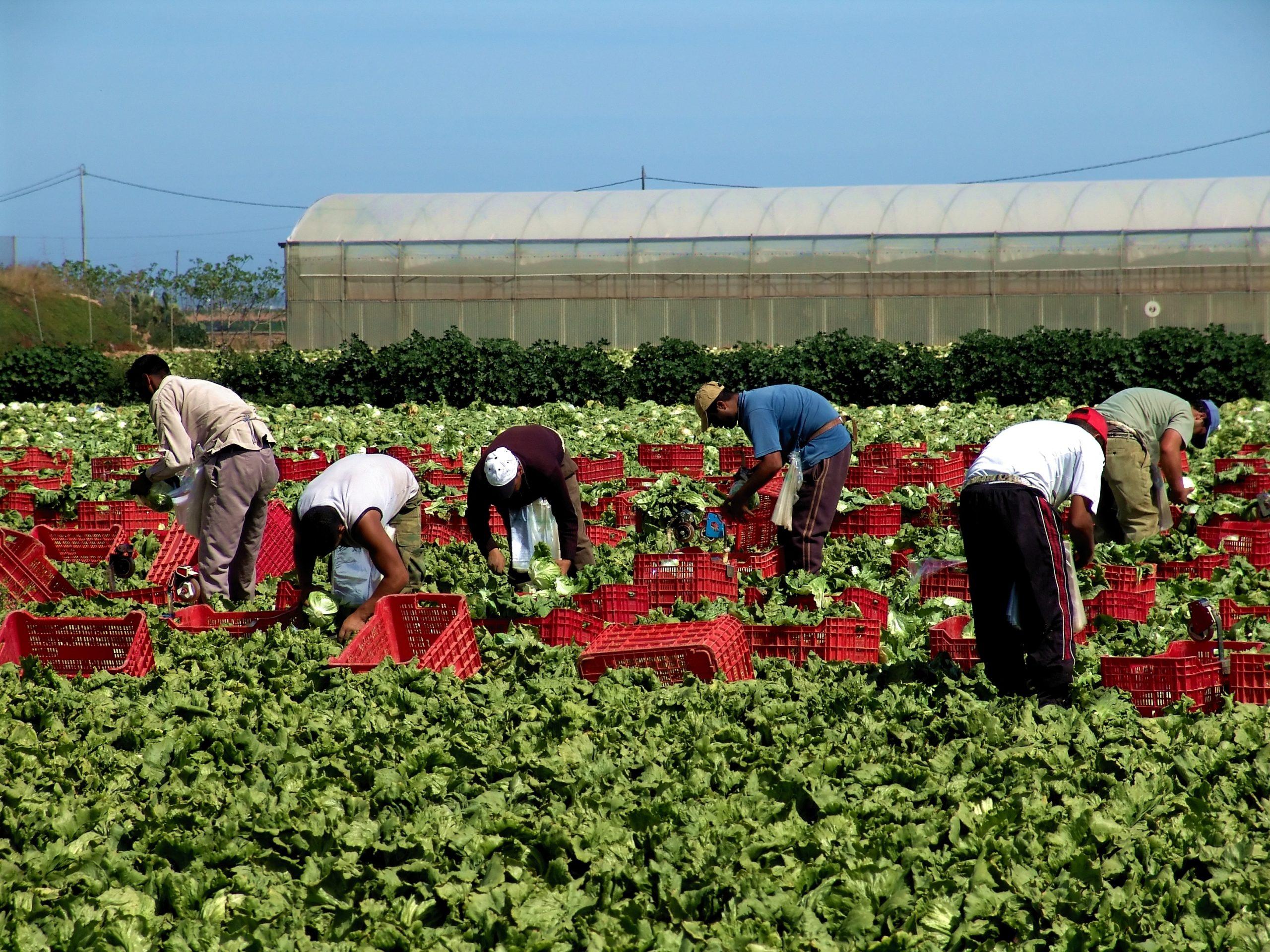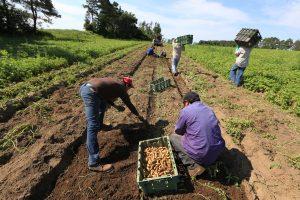FVGC's Policy Priorities
The Fruit and Vegetable Growers of Canada (FVGC) calls on the Government of Canada to adopt a food lens in policy-making to prioritize food security and ensure that every policy strengthens the resilience and capacity of Canada’s fruit and vegetable sector in delivering safe, healthy, and diverse produce to Canadians.Canada’s Food Security: Embracing a food lens
The Fruit and Vegetable Growers of Canada (FVGC) represents over 14,000 farms producing more than 120 crops. We advocate for policies that support growers and ensure Canadians have access to safe, healthy, domestically-grown produce.
From Gender Based Analysis to equity and climate change the Government of Canada is no stranger to viewing and assessing the development of public policy through dedicated policy prisms. While each of these lenses speaks to important policy considerations, few things are more fundamental to the well-being of individuals, families, communities and nations, than food security.
For our organization and the almost 15,000 producers we represent, applying a food lens to policy development means seeing the Government of Canada elevate food security as a national priority. It means recognizing that all key policy initiatives should answer a simple question: will it enhance or reduce the quantity, quality and diversity of domestic food production?
Three policy examples below illustrate how maladapted policies negatively impact Canada’s food security.

Policy Priorities of the Fruit and Vegetable Sector
LABOUR SHORTAGES
- Problem: Labour shortages are severely affecting the ability to harvest perishable crops.
- Impact: Without streamlined and better-adapted labour programs, we will see growing shift to less labour-intensive crop production, a reduction in the diversity of Canada’s food supply, higher consumer prices and reduced access to domestically grown food.
- Solution: Adapt programs like the Temporary Foreign Worker Program (TFWP) and the Seasonal Agriculture Worker Program (SAWP) to better reflect the operational realities of the fresh fruit and vegetable sector by incorporating greater flexibility, improved processing, and stronger federal-provincial alignment.
CROP PROTECTION
- Problem: Limited access to modern, science-based crop protection tools hampers growers’ ability to manage pests and diseases effectively.
- Solution: Increase funding for the Pest Management Centre (PMC) and the Pest Management Regulatory Agency (PMRA) to expedite the approval of necessary crop protection tools.
- Impact: Without timely access to crop protection tools, yields will fall, leading to more imports and weakened food security. A food lens ensures that these tools are prioritized to maintain a stable Canadian food supply.
SECTOR COMPETITIVENESS
- Problem: Our trading partners – particularly the United States –provide more support to their growers’ efforts to reduce carbon consumption and its resulting costs through incentive programs, while Canadian producers are saddled with growing carbon costs.
- Solution: Provide targeted support for climate adaptation, energy efficiency, and sustainability, aligned with trade agreements to maintain competitiveness.
- Impact: Without targeted programs to address the growing input cost advantage enjoyed by our trading partners, Canadian farmers will struggle to compete, increasing reliance on imports and threatening our food sovereignty.
A Case for the Food Lens: Stats that tell Canada's Food Security Story
Average Size of Farms
- Potato farms: Approximately 250-500 acres depending on the region.
- Vegetable farms: Typically range between 150-250 acres.
- Fruit farms: Ranges from 50-150 acres, with smaller, more specialized farms for berries and grapes. (StatsCan)
$6.8 Billion
In 2022, Canada’s fruit and vegetable farms had a farm gate value of $6.8 billion. (Statistics Canada)
4 out of 5 Canadian Farmers
reported being unable to raise their selling price in line with rising costs. In a survey on the costs of production in the fresh produce sector, Canadian operators reported a significant increase in costs, with peaks for water, fuel/ gas and fertilizers. In fact, only 1 in 5 reported being able to raise their selling price in line with rising costs. (Global Coalition of Fresh Produce)
185 400 Jobs
The fruit and vegetable sector supports over 60,000 jobs across Canada, with nearly half of the workforce being comprised of foreign workers. The broader fresh produce supply chain supports 185, 400 jobs. (Statistics Canada)
11% Vacancy Rate
The fruit and vegetable sector had an 11% labour vacancy rate in peak season, the highest in Canadian agriculture. (Canadian Agriculture Human Resources Council) At peak, this is a chronic shortfall of over 6000 workers
40% of Canadian farm operators will retire
A 2023 Royal Bank of Canada report found that, by 2033, 40% of Canadian farm operators will retire; over the same period a shortfall of 24,000 general farm, nursery and greenhouse workers is anticipated. (Royal Bank of Canada, 2023).
$260 Million in lost sales
In 2022, labour shortages in the fruit and vegetable industry resulted in $260 million in lost sales (Canadian Agriculture Human Resources Council)
5100 Labour Vacancies by 2030
Despite increasing reliance on foreign workers, 22,200 positions are projected to remain unfilled by 2030 (Canadian Agriculture Human Resources Council)
90% Increase in Food Bank Visits
Food bank visits in Canada have increased by 79% between 2019 and 2024. Children make up 33% of food bank users, despite only representing 20% of the population. (HungerCount, Food Banks Canada)
8.7 million Canadians living in food insecurity
8.7 million Canadians lived in food insecure households in 2023 (HungerCount, Food Banks Canada)
97% of Canada’s Farms are Family Owned and Operated
This compares to other industries, where only 63% of companies in Canada are family owned and operated (Statistics Canada)
0.5% of farm gate receipts in government climate funding
Canadian farmers receive 0.5% of farm gate receipts in government climate funding compared to 1.7% in the US and 1.8% in the EU (Royal Bank of Canada)
96% Exported to the USA
96% of Canada’s fruit and vegetable exports, valued at over $4 billion, were exported to the U.S. (Statistics Canada)
The Cost of Inaction
Without immediate action, Canada’s fruit and vegetable sector will struggle, leading to:
-
More Canadian production moving to the United States
-
Increased reliance on imported food
-
Fewer family farms
-
Higher food prices
Your Role in Securing Canada’s Food Future: A Call for Action

The Government of Canada and all parliamentarians play a vital role in safeguarding Canada’s food future. By applying a food lens to the development and consideration of key policies, the government can ensure a sustainable, competitive fruit and vegetable sector. FVGC is ready to collaborate on developing solutions that protect food security, support Canadian farmers, and ensure all Canadians have access to healthy, quality and affordable food. Contact us to get started!
For more information
please contact Angela Reid by submitting this form.
